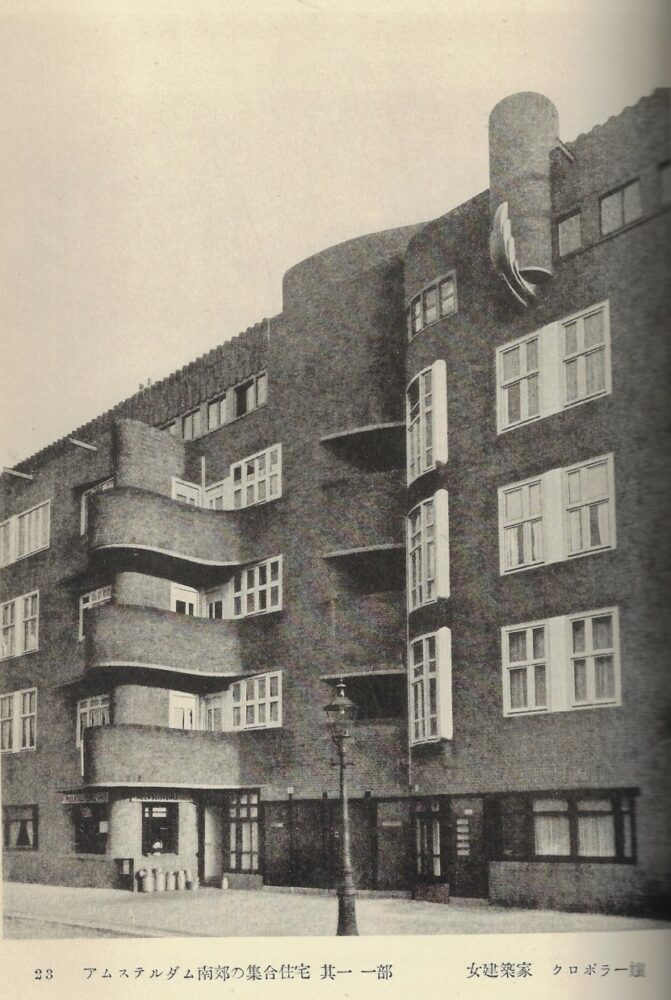現代オランダ建築 – Modern Dutch architecture
1924
verkauftHoriguchi, Sutemi (堀口 捨己):
Gendai Oranda kenchiku (現代オランダ建築) [Modern Dutch architecture].
Tokyo, Iwanami Shoten 1924 (Taishô 13).
(2), 9, 15, 42, (2)pp and 86 plates, profusely illustrated with photographs and drawings.
26,5 x 18,5 cm. Original cardboard cover in slipcase.
sold
First edition, first impression.
Horiguchi Sutemi (1895-1984) was a Japanese architect of the Taishō and Shōwa period. He graduated from the Department of Architecture at the University of Tokyo in 1920 and teamed up with old school friends to replace the eclectic styles of the time with architecture that was scientifically and theoretically justified. With this in mind, he designed various buildings for the 1922 Peace Memorial Exhibition, in which the influence of the Vienna Secession can be felt.
In 1923 Horiguchi traveled through Europe, where he studied the latest Bauhaus work and traveled to the Netherlands. Back in Japan, he represented a functionalism in architecture, as his villas for the Yoshida family (1930), Wakasa family (1939) and the Meteorological Station Ōshima (1939) show. The design of the cover is very noteworthy because it uses the design of Th. Wijdeveld for the „Mendelsohn“ issue of the Wendingen series from 1920.
On the significance of the author and this book in particular, see also: Daiki Amanai, „International“ Style Architecture in the 1930s Japan: The Vernacular and Monumentaly, 2014.
From September 15 to October 22, 2023, the Amsterdam School Museum Het Schip presented an exhibition dedicated to the Japanese architect Horiguchi.
Some foxing in places, overall a very fine copy, especially the important binding is very well preserved.


